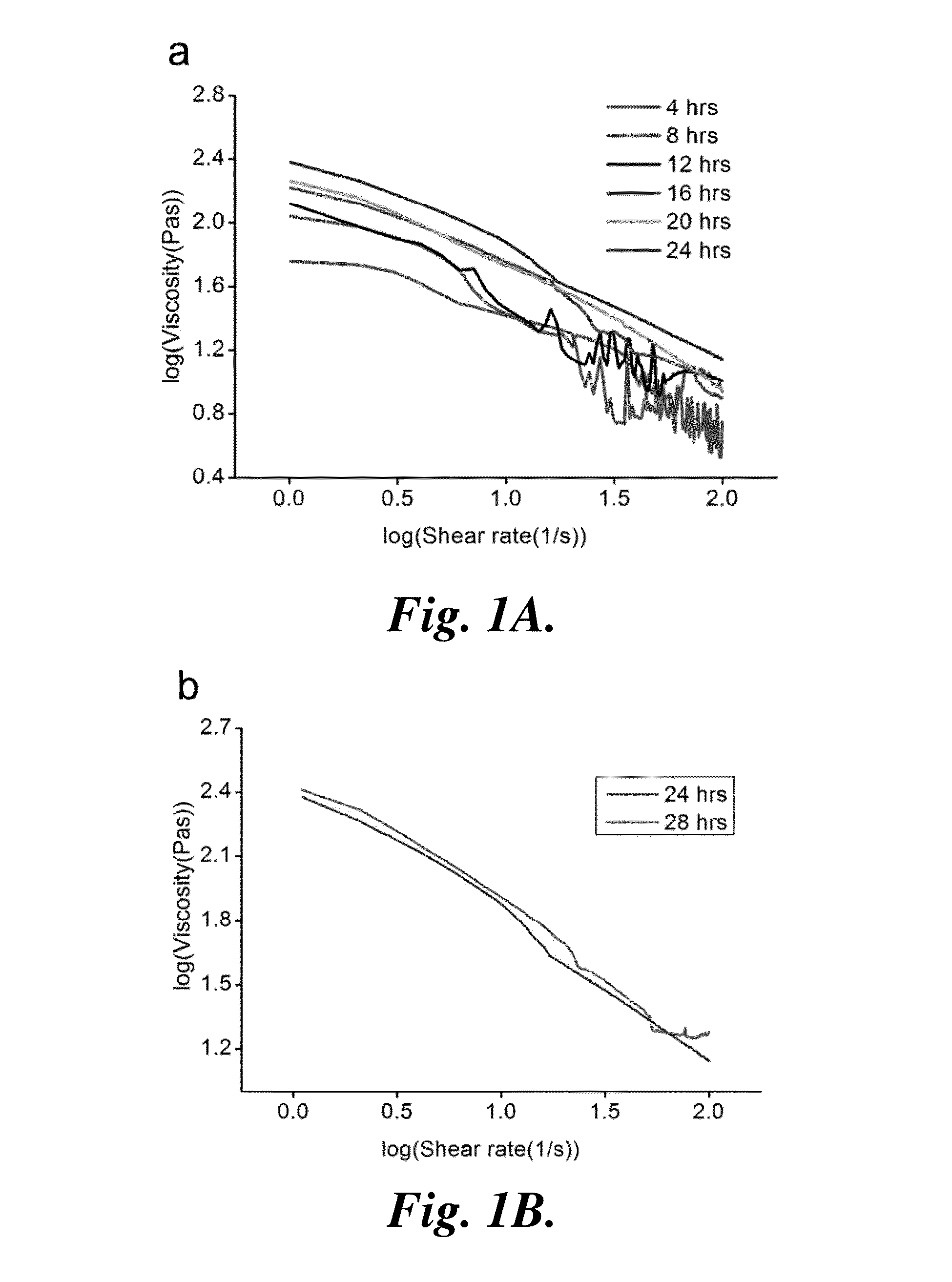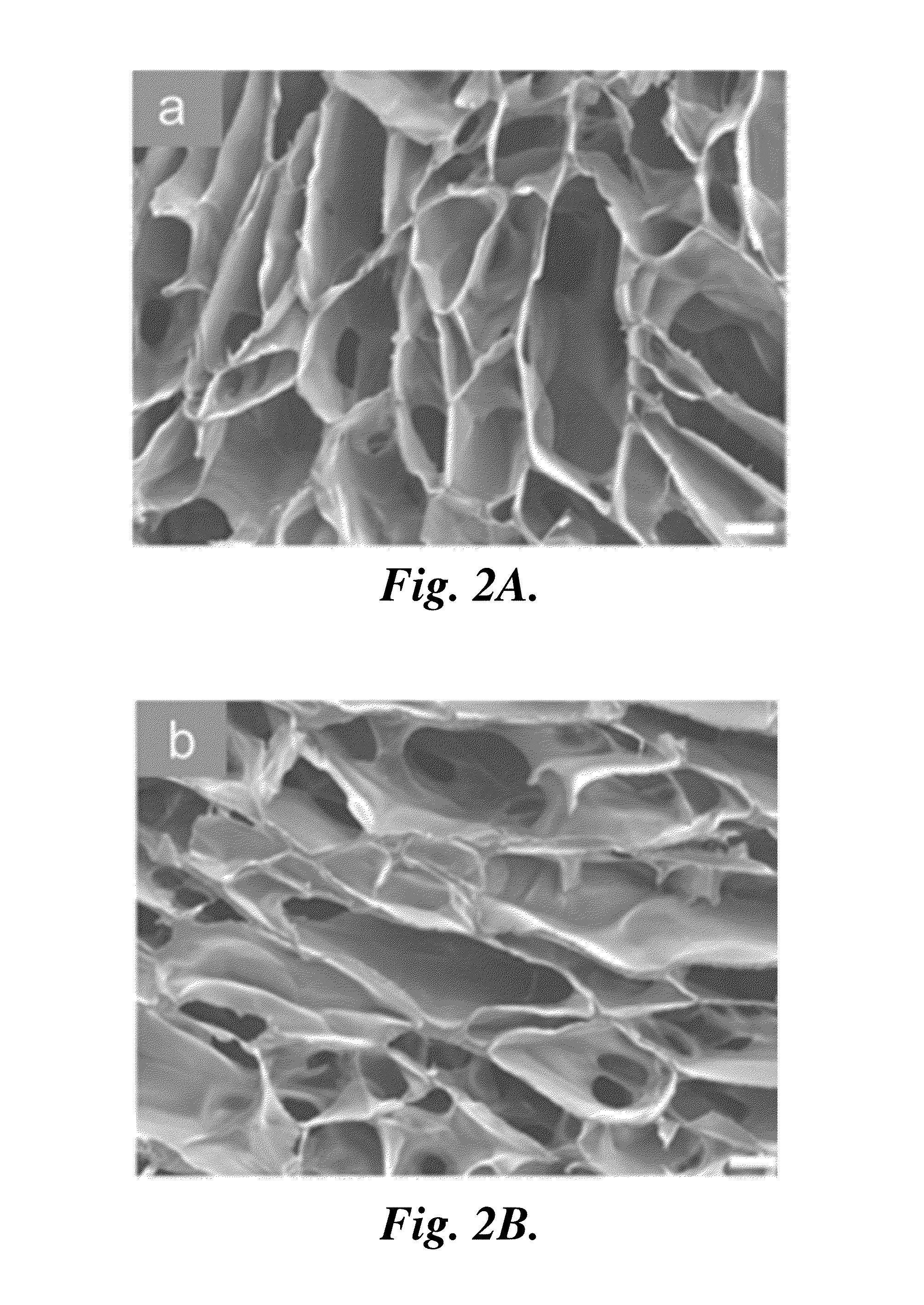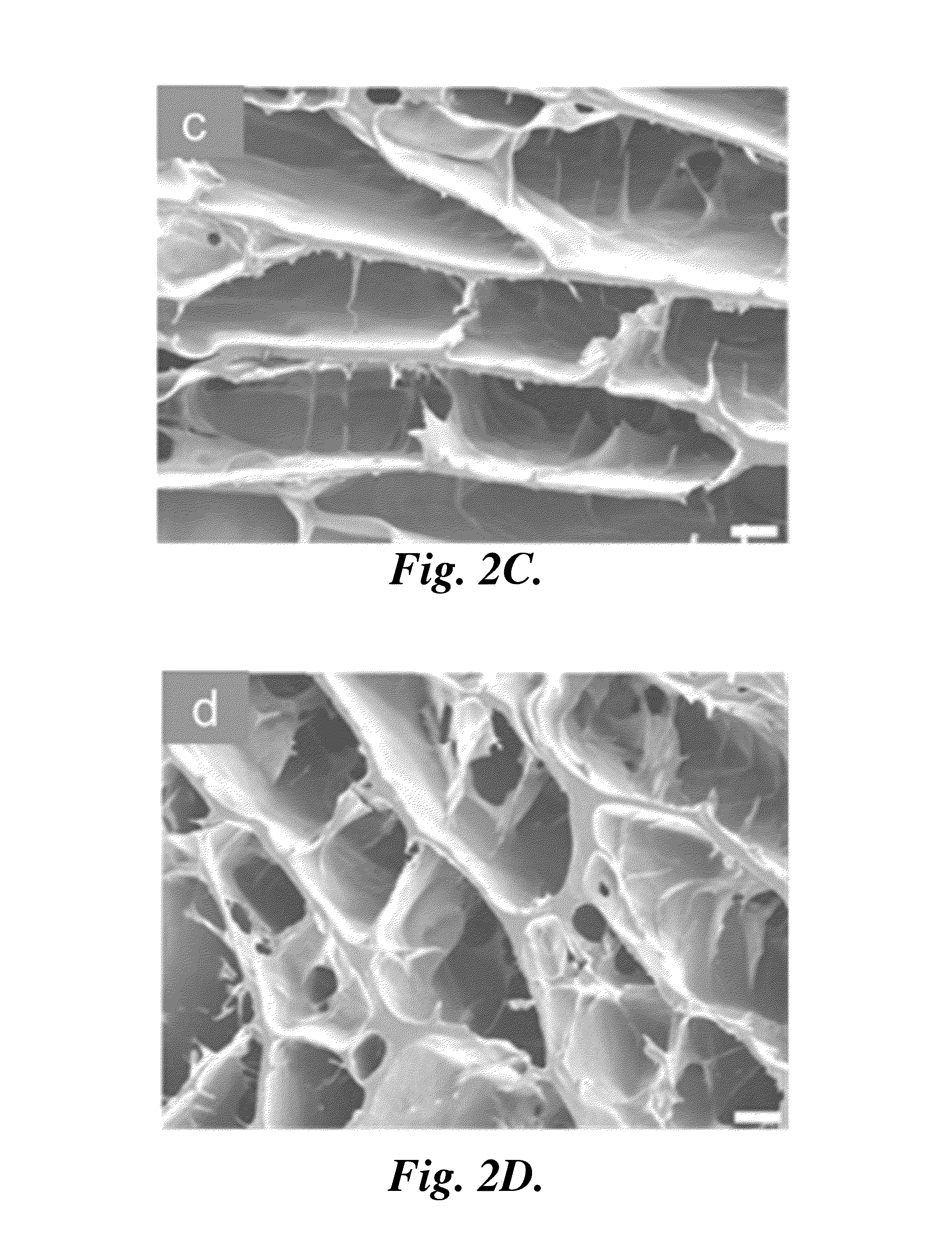Porous chitosan scaffolds and related methods
a technology of porous chitosan and scaffolds, applied in the field of porous chitosan scaffolds, can solve the problems of low mechanical strength, the inability to withstand pristine chitosan,
- Summary
- Abstract
- Description
- Claims
- Application Information
AI Technical Summary
Benefits of technology
Problems solved by technology
Method used
Image
Examples
example 1
The Preparation of Representative Chitosan Scaffolds
[0147]In this example, the preparation of representative chitosan scaffolds of the invention is described.
[0148]Chitosan solutions of different concentrations (4, 6, 8 and 12 wt %) were prepared by dissolving chitosan powder (Medium molecular weight, weight average molar mass MW 190-200K, 85% deacetylated, Brookfield viscosity 200-800 cps in 1% solution with 1% acetic acid, Sigma-Aldrich) in 0.34 M (2 v %) acetic acid and maintaining the solutions at 25° C. for 24 h with intermittent stirring. Chitosan was dissolved completely in 4, 6 and 8 wt % solutions. The solution without filtration was then cast into a 10 mL plastic syringe, and centrifuged at 6000 rpm for 10 min to remove air bubbles. The samples were then frozen at −20° C. for 24 h. After freezing, the samples were lyophilized in a freeze drier (Labconco FreeZone 6Plus) under vacuum at −89° C. until fully dried. The resultant cylindrical chitosan scaffolds (about 10 cm heig...
example 2
Methods for Characterizing Representative Chitosan Scaffolds
[0149]In this example, methods for characterizing representative chitosan scaffolds of the invention are described.
[0150]Chitosan Viscosity Measurements.
[0151]6 wt % chitosan solution was prepared by dissolving chitosan powder in 0.34 M acetic acid at room temperature with stirring. 10-mL samples were removed from the solution every four hours up to 28 hr. A Haake Viscotester VT550 Rheometer (HAAKE) with an SV sensor system was used to measure the viscosity of the sample. The sample was run at 25° C. maintained by a circulating water bath (DC-10, HAAKE), and measured for 1000 s up to a shear rate of 100 s−1.
[0152]SEM Imaging.
[0153]Chitosan scaffold samples were sputter-coated with Au / Pd for 60 s at 18 mA and imaged by scanning electron microscopy (SEM, JEOL JSM 7000). For SEM analysis of the morphology of cells grown in chitosan scaffolds, the scaffold samples cultured with MG-63 cells for 7 days were rinsed in PBS, fixed i...
PUM
| Property | Measurement | Unit |
|---|---|---|
| compressive strength | aaaaa | aaaaa |
| compressive strength | aaaaa | aaaaa |
| porosity | aaaaa | aaaaa |
Abstract
Description
Claims
Application Information
 Login to View More
Login to View More - R&D
- Intellectual Property
- Life Sciences
- Materials
- Tech Scout
- Unparalleled Data Quality
- Higher Quality Content
- 60% Fewer Hallucinations
Browse by: Latest US Patents, China's latest patents, Technical Efficacy Thesaurus, Application Domain, Technology Topic, Popular Technical Reports.
© 2025 PatSnap. All rights reserved.Legal|Privacy policy|Modern Slavery Act Transparency Statement|Sitemap|About US| Contact US: help@patsnap.com



